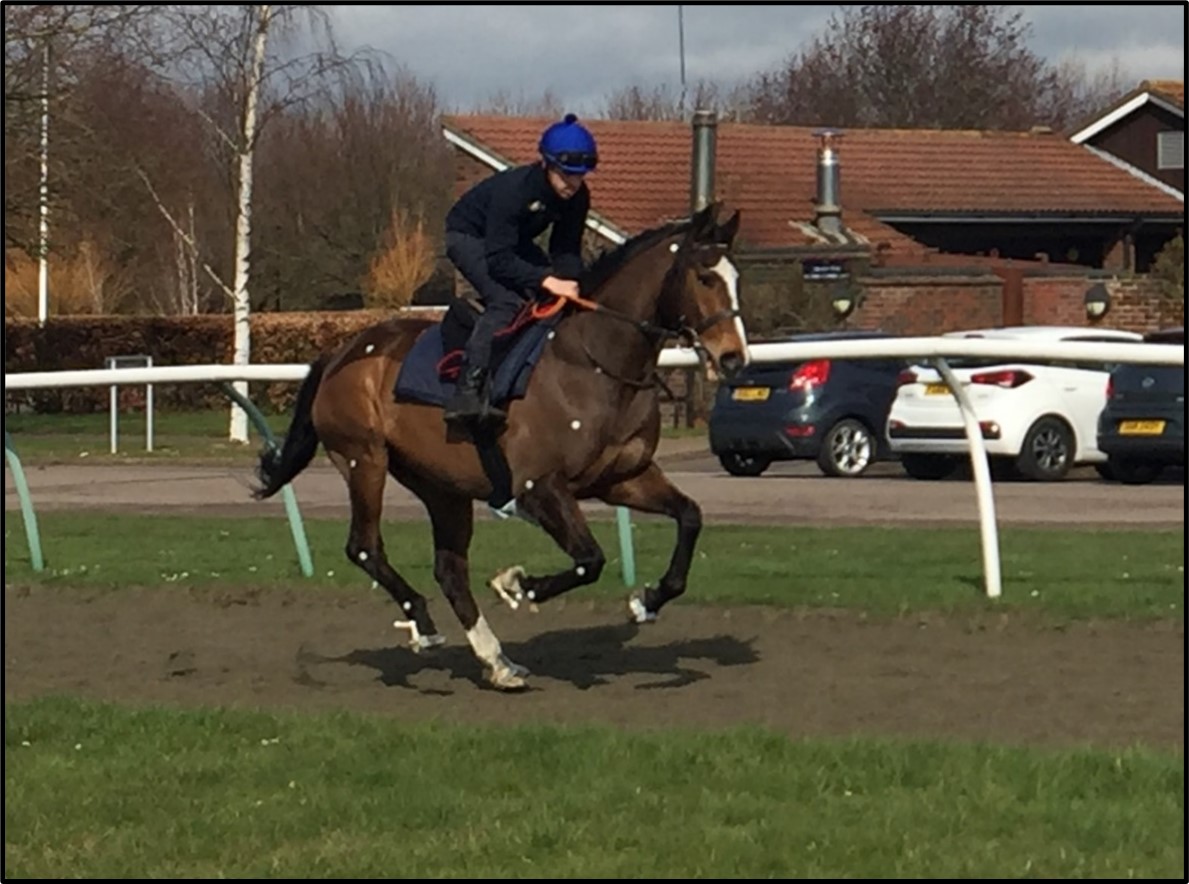Pioneering RVC research study reveals impacts of horse shoe and ground surfaces on horses and riders
Pioneering RVC study reveals associations between hoof-ground interactions and upper body movements of horses and their riders
The study, led by the Royal Veterinary College, revealed alterations to horseshoes and ground surface conditions influence the 3D centre of mass movements of galloping horses and their jockeys.
Equine biomechanics researchers from the Royal Veterinary College (RVC) have discovered associations between hoof-ground interactions and the upper body movements of both racehorses and their jockeys during galloping. The study, which is the first of its kind, is an important step towards improving the stability, safety and performance of horses in racing, as biomechanical instabilities are the trigger for most horse falls and jockey injuries.

Horseshoes influence how horses’ hooves interact with different ground surfaces during the impact, loading and push-off phases of a stride cycle. Consequently, they impact on the biomechanics of horses’ proximal limb segments and upper body. Therefore, different horseshoe and surface combinations could cause changes in the magnitude and stability of movement patterns in horse-jockey dyads.
The team, made up of Dr Kate Horan, Dr -Ing. Thilo Pfau and Peter Day of the RVC, alongside James Coburn’s farriery team, the British Racing School and the University of Edinburgh, measured these movements using inertial sensing technology. This technology was fitted to the girth of the horses and at the pelvis of the jockeys, and four shoeing conditions – aluminium, barefoot, GluShu and steel – were trialled on turf and artificial surfaces. Thirteen retired racehorses and two jockeys at the British Racing School were used for this study.
Amongst the findings were the dorso-ventral (vertical) displacements, which showed the largest differences amongst the set conditions. Increased dorso-ventral displacements were found on the artificial track in comparison to turf and may reflect greater hoof sink on impact followed by increased push-off. More similar changes in dorso-ventral movements under aluminium and barefoot shoeing conditions, when compared to GluShu and steel, were suggested to reflect differences in shoe mass. The artificial surface and steel shoes provoked the least cranio-caudal (forwards-backwards) movement of the jockey, suggesting they may promote the greatest stability.
One particularly intriguing finding of this study was that differences between horse and jockey mean displacements per shoe-surface condition indicated dorso-ventral and cranio-caudal displacement offsets with compensatory increases and decreases. For example, the most extreme horse-rider displacement difference in the dorso-ventral axis corresponded to the lowest difference in the cranio-caudal axis (GluShu-artificial) and vice versa (aluminium-turf).
There was also a general separation of artificial and turf data, with the former associated with relatively larger cranio-caudal axis and smaller dorso-ventral axis displacement offsets. These trends might signify a feedback loop was at play, whereby if a shoe-surface combination triggered horse-jockey displacement differences beyond a certain threshold in the cranio-caudal axis, then compensatory changes were required in the dorso-ventral axis for the horse and jockey to maintain stability over a stride cycle.
Dr Kate Horan, postdoctoral research assistant at the RVC, said:
“It has been really exciting to be part of a team investigating the impact of farriery interventions on horse and jockey movement dynamics. We have demonstrated that a consideration of horseshoes and surfaces is paramount if we are to begin to understand the complexity of horse and jockey movements, and how they interact during high-speed locomotion.
“We were particularly intrigued to find that the horses and jockeys we studied appeared to operate within displacement limits, in an attempt to maintain stability in different shoe and surface conditions. Work of this nature may ultimately enable us to become prophylactic with regards to reducing the risk of falls, improving horse comfort, and preventing catastrophic injuries in equine athletes and their jockeys.”
Notes to Editors
Reference
The effect of horseshoes and surfaces on horse and jockey centre of mass displacements at gallop
Kate Horan, Kieran Kourdache, James Coburn, Peter Day, Henry Carnall, Dan Harborne, Liam Brinkley, Lucy Hammond, Sean Millard, Bryony Lancaster, and Thilo Pfau.
The full paper is available from PLOS ONE and can be accessed here: https://journals.plos.org/plosone/article/metrics?id=10.1371/journal.pone.0257820
For media enquiries, please contact:
- Jasmin De Vivo (jasmin.devivo@plmr.co.uk) or rvc@plmr.co.uk
- Press Line: 0800 368 9520
About the Royal Veterinary College
- The Royal Veterinary College (RVC) is the UK's largest and longest established independent veterinary school and is a Member Institution of the University of London. It was the first in the world to hold full accreditation from AVMA, EAEVE, RCVS and AVBC.
- The RVC is ranked as the top veterinary school in the world in line with the QS World University Rankings by subject, 2021.
- The RVC offers undergraduate and postgraduate programmes in veterinary medicine, veterinary nursing and biological sciences.
- In 2017, the RVC received a Gold award from the Teaching Excellence Framework (TEF) – the highest rating a university can receive.
- A research led institution with 79% of its research rated as internationally excellent or world class in the Research Excellence Framework 2014.
- The RVC provides animal owners and the veterinary profession with access to expert veterinary care and advice through its teaching hospitals and first opinion practices in London and Hertfordshire.
You may also be interested in:
-
New RVC study reveals 2075 percent rise in surgeries for French Bulldogs
New research from the Royal Veterinary College (RVC) has revealed a 2075% increase in soft-tissue …

